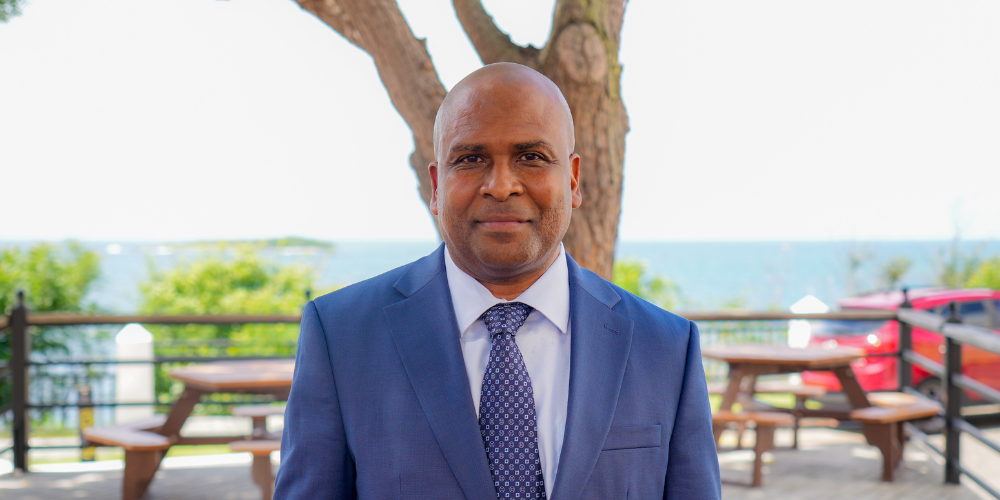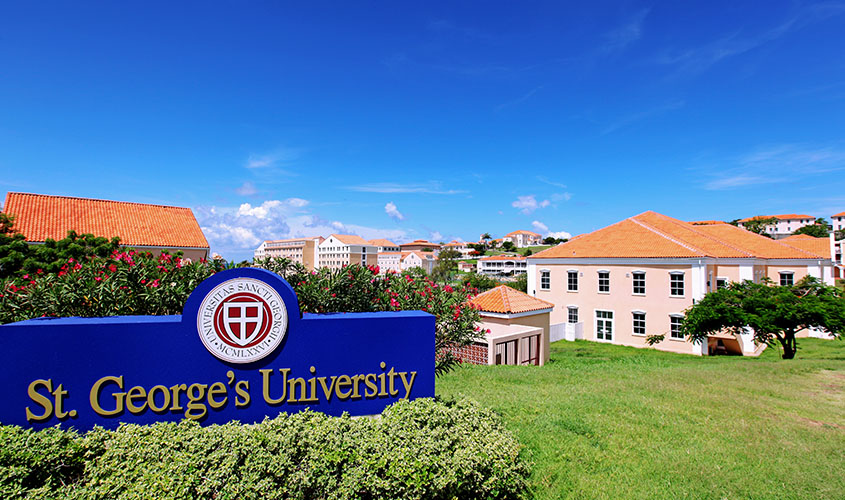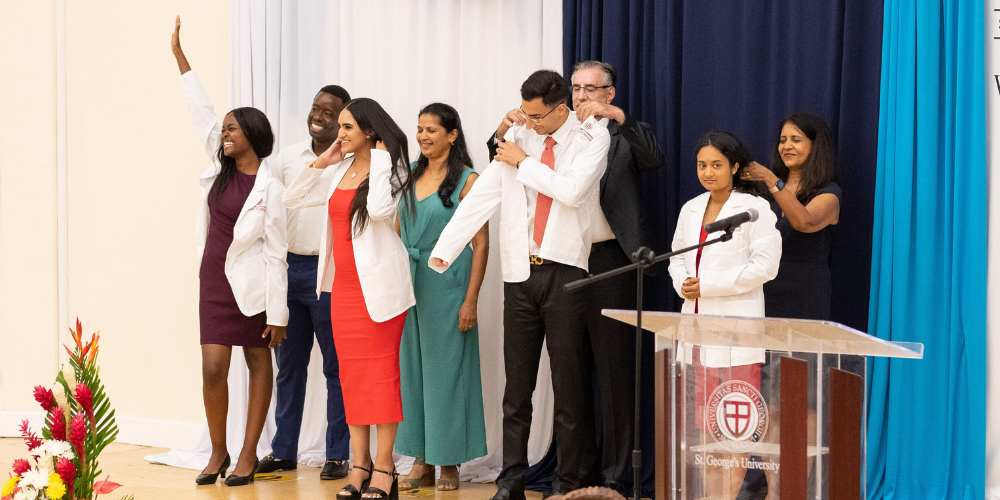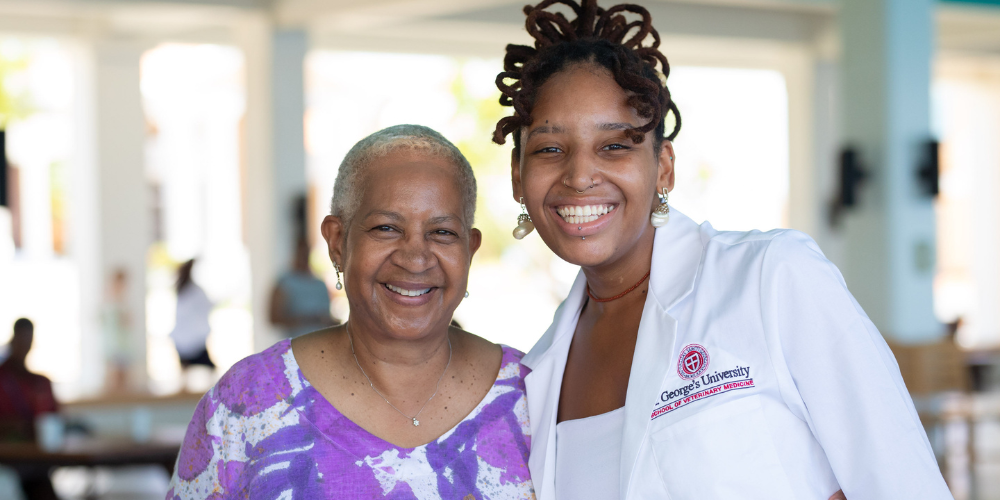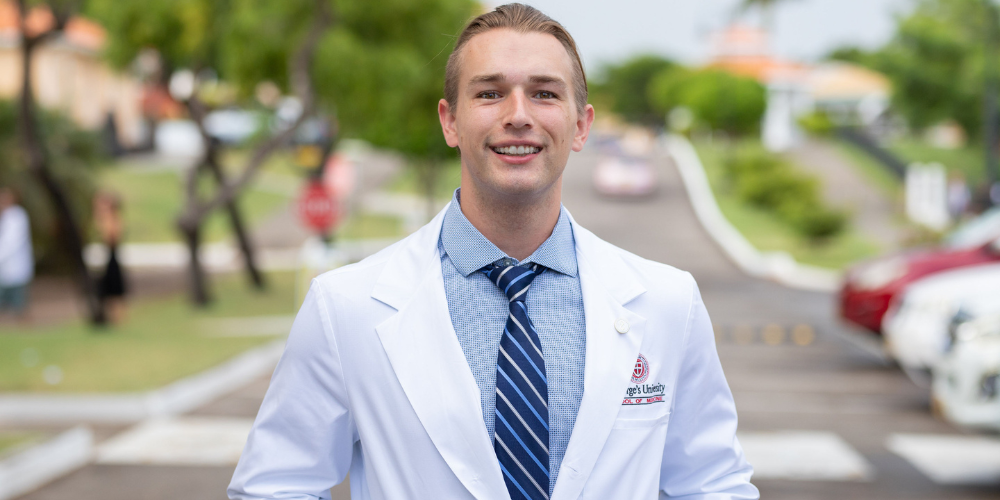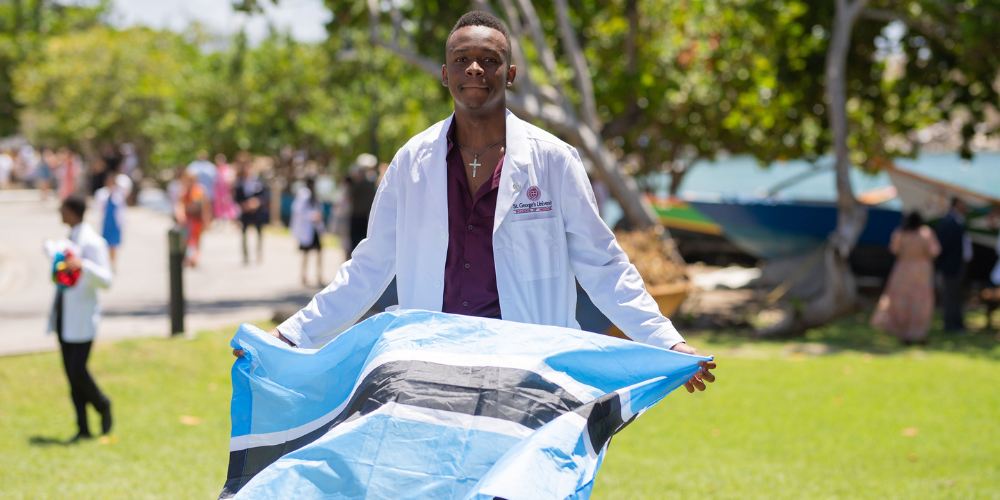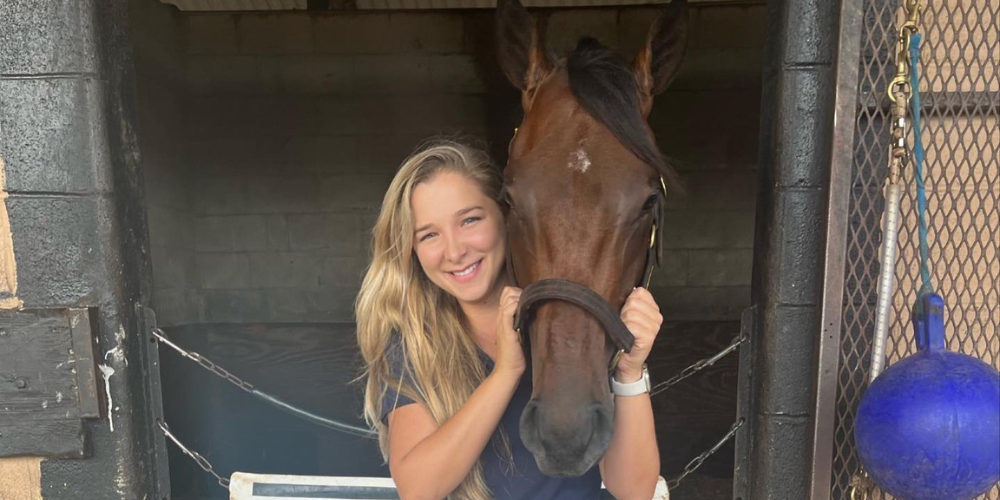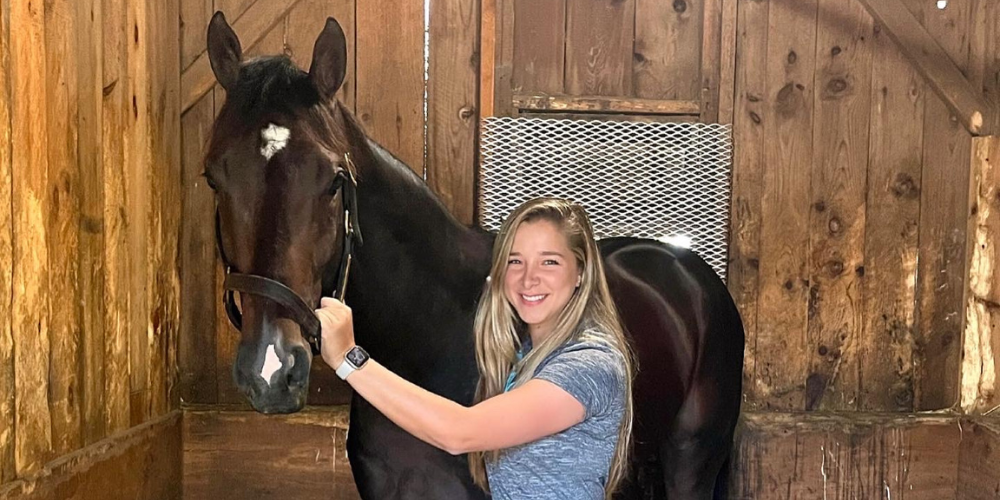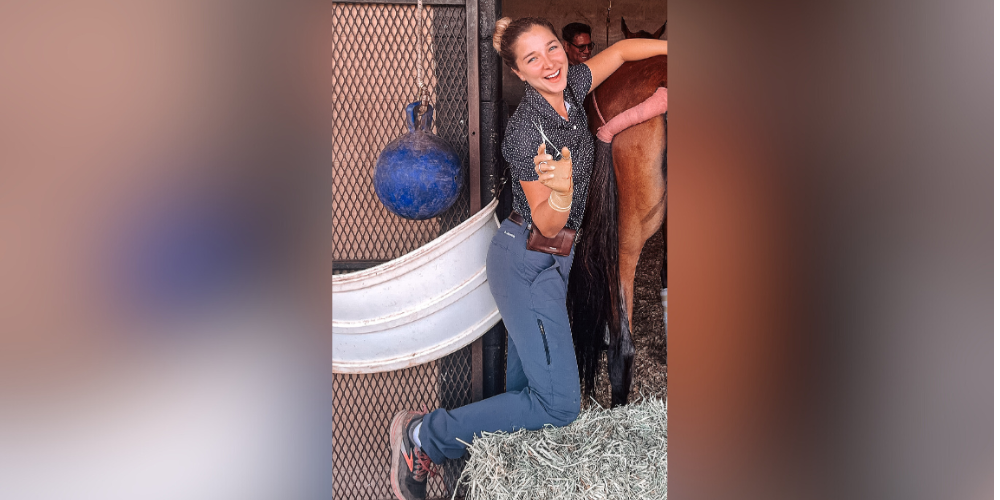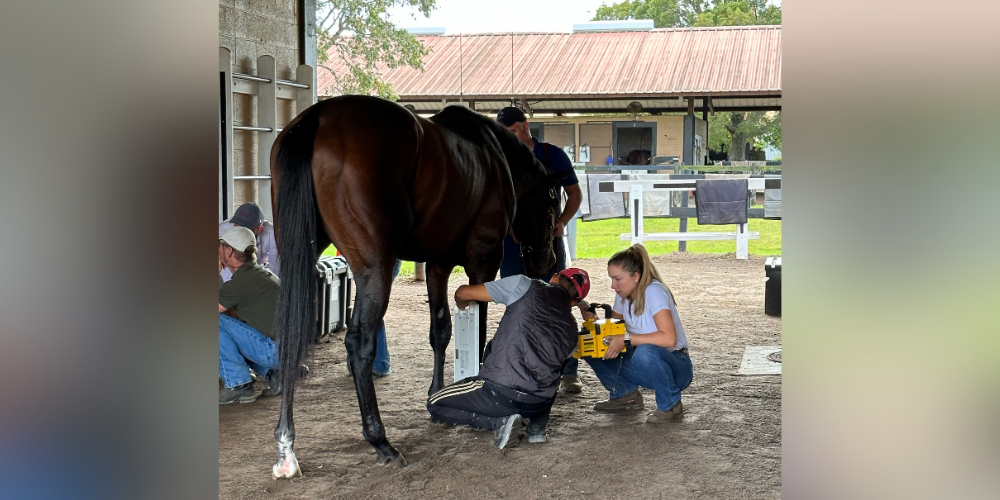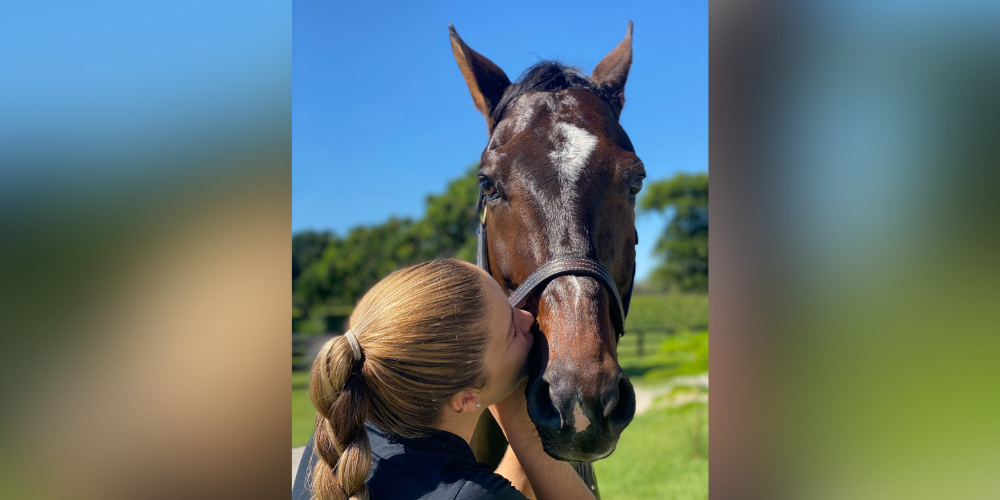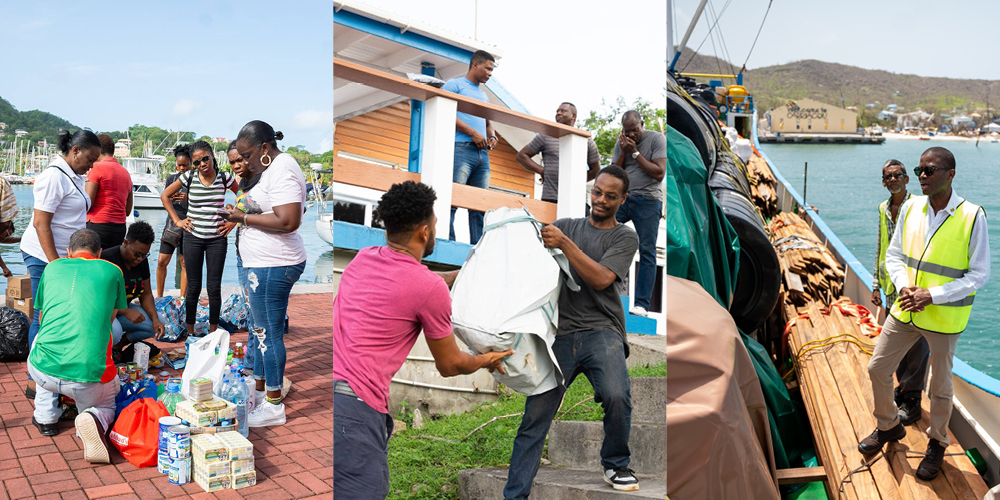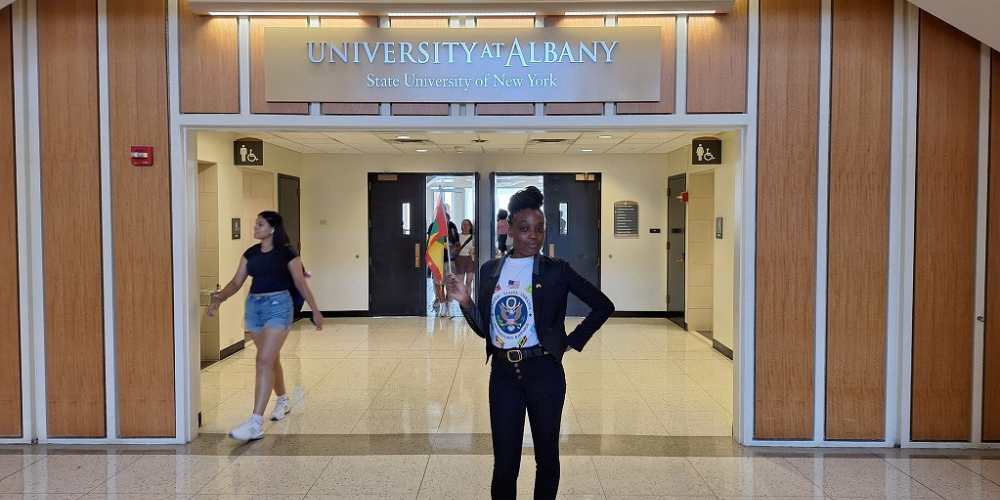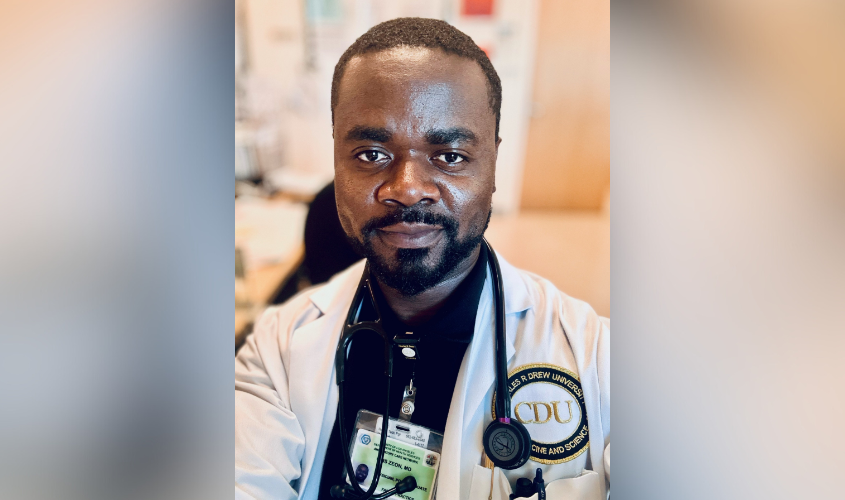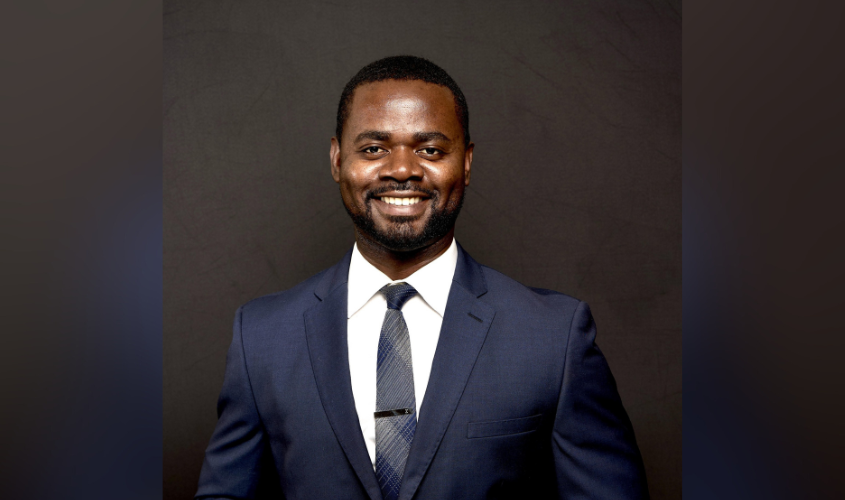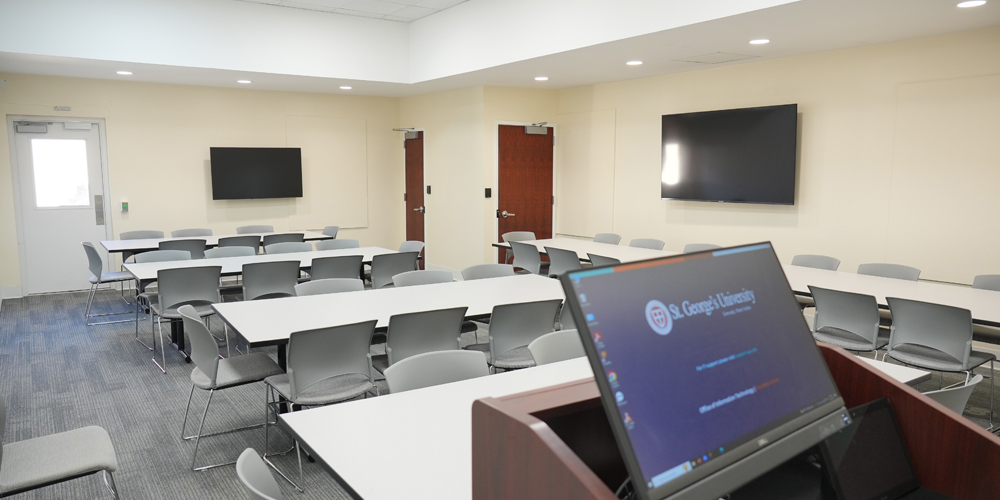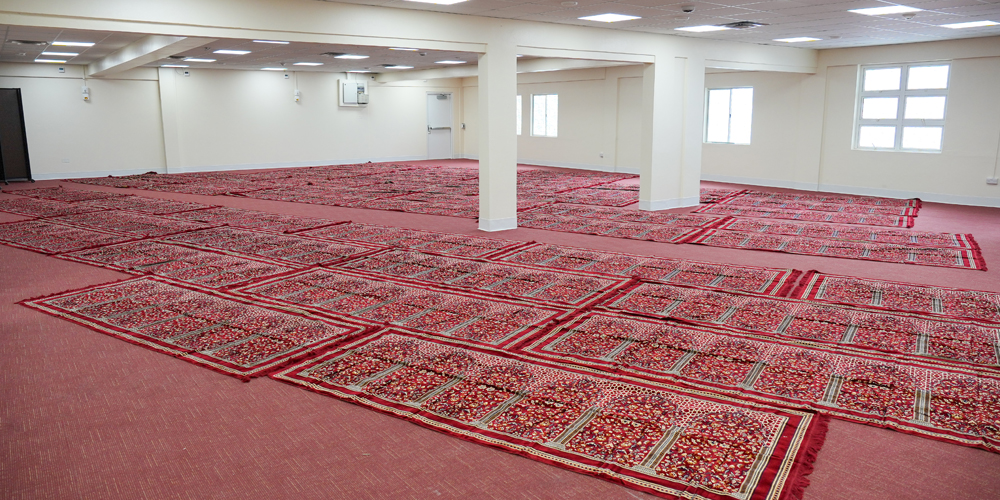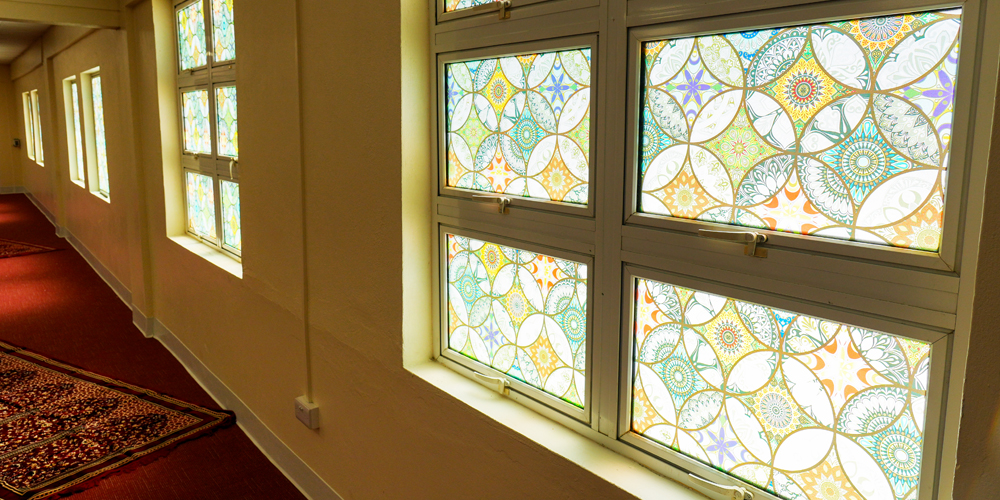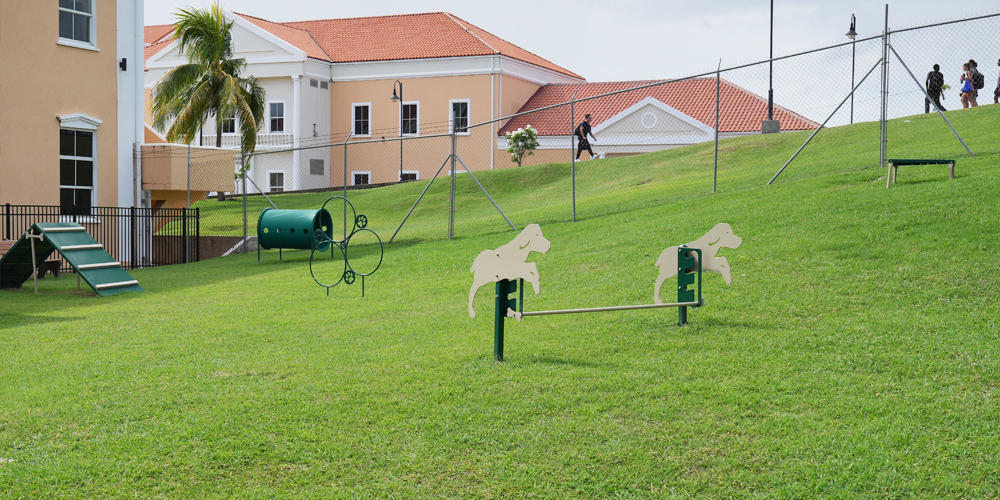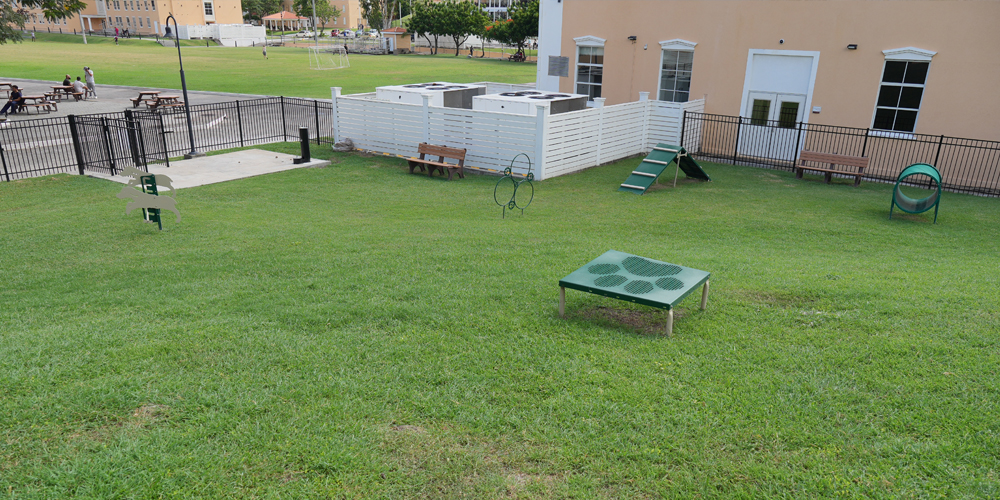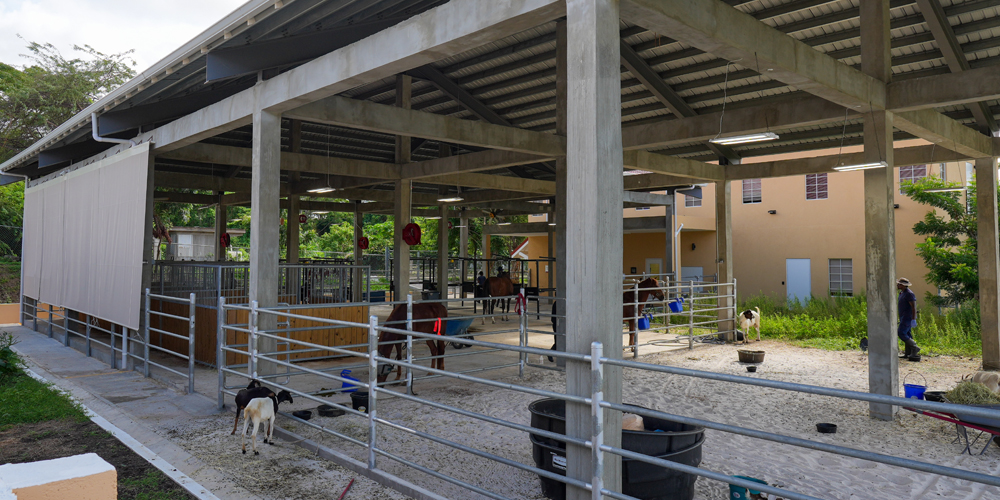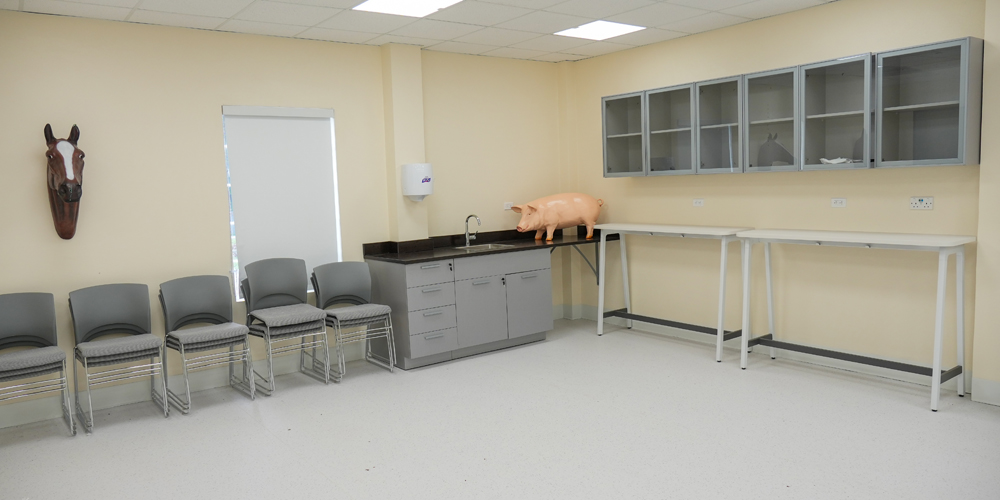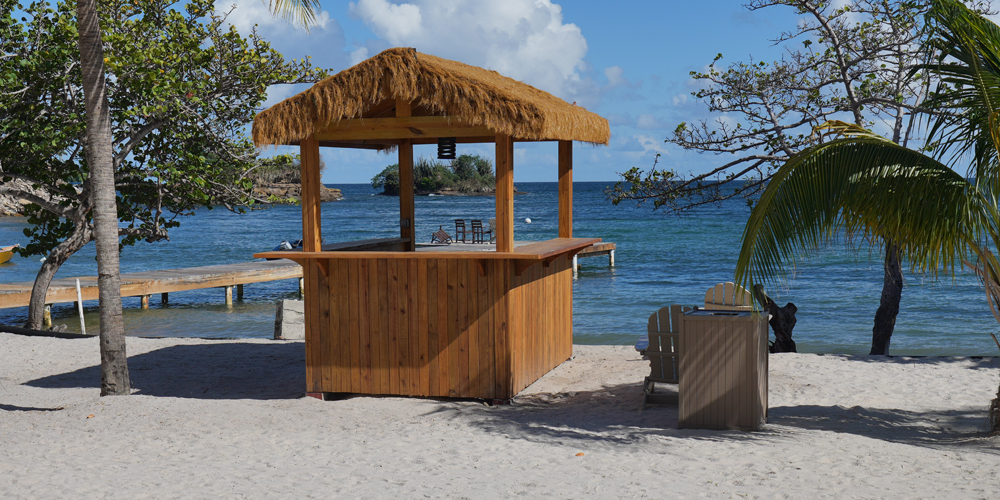How SVM Aided Grenada’s Animals and Communities Post-Hurricane Beryl

Luna, a nine-month-old dog that was injured after the hurricane in a traffic accident. She has since made a full recovery thanks to the team at CAH. (Photo via: Carriacou Animal Hospital)
St. George’s University School of Veterinary Medicine students, faculty, staff, and alumni aided Grenada’s animals and livestock in the wake of Hurricane Beryl in an uplifting display of community and collaboration.
Hurricane Beryl, a Category 5 storm, barreled through the Caribbean in early July causing extensive destruction to homes and other structures in northern Grenada and Grenada’s sister islands, Petite Martinique and Carriacou.
Assessing the damage
Once the storm clouds cleared, it was clear that the islands were in need of help, and the SGU community jumped into action. Throughout Grenada, SGU students helped rebuild structures, distribute necessities, organize donations, and clean up beaches and other public areas. The School of Medicine Alumni Association (SOMAA) led a charity drive to help with relief efforts. With help from School of Veterinary Medicine alumni and other friends, they collected more than $77,000 USD to donate to help those in need.
Further, the Grenada Ministry of Agriculture and Lands requested assistance from SGU. Carriacou needed help assessing the health of the island’s livestock and tending to the management of the stray animal population, according to Dr. Satesh Bidaisee, interim chair for SVM’s Large Animal Medicine and Surgery Department.
“With adverse weather events such as hurricanes, planning for before, during, and after the event must also include the animal populations that are around us,” said Dr. Bidaisee. “A one-health focus for tending to people, animals, and the environment is critical for ensuring the best possible outcome during and after the adverse events.”
Immediately, a veterinary team led by Dr. Wayne Sylvester, medical director of the Small Animal Clinic, sprang into action, traveling to Carriacou to begin administering veterinary care and coordinating relief. The team tended to injuries of the livestock, worked to secure a food supply for the animals, and helped get the stray animal population under control through spay and neuter procedures.
“After the initial assessment, we came up with a list of priorities. That included getting food to the dogs and cats, getting food to the livestock, and getting building materials to the farmers. We wanted to help get the farmers back into farming, back into preserving their livelihoods,” Dr. Sylvester said.
Poultry farms were hit particularly hard as chickens were susceptible to rising water levels and inadequate shelters. Dr. Sylvester said that he and his team estimated thousands of casualties to poultry, sheep, goats, pigs, cattle, and other livestock.
Additionally, the Hill’s Pet Nutrition donated about 1,500 pounds of dog and cat food to distribute in Carriacou, shared Tara Paterson, DVM ’03, associate professor in the Small Animal Medicine and Surgery Department and president of School of Veterinary Medicine Alumni Association.
“It’s always amazing how events like this really help humanity come together,” said Dr. Paterson. “The outpouring of support is heartwarming.”

Pet food donated from the GSPCA and SGU via Hill’s Pet Nutrition. (Photo via: Carriacou Animal Hospital)
Instilling hope
The veterinary team said that initially, a few farmers felt that they had lost too much to return to their profession and could not focus on their work as they once did. But that the majority of farmers in Carriacou have committed to continuing to farm thanks to the outpouring of help.
“We spent a couple of days on the ground just discussing with farmers, teaching them, advising them, and in some situations giving them hope. We provided more than veterinary care. Veterinary care was primary, but we also had to keep those animals alive, keep them productive, because of the risk of the agricultural industry being destroyed,” said Dexton St. Bernard, DVM ’21, MSC ’23, an instructor of parasitology at SGU and part of Dr. Sylvester’s veterinary team.
Originally from Grenada, he is also a member of the SGU outreach committee for technical support for the farming community and collaborates with the Grenada Ministry of Agriculture in providing veterinary support from time to time.
Dr. St. Bernard shared a poignant story of his experience aiding an elderly poultry farmer who is also one of the main suppliers of eggs on the island. His pens were blown away by the wind in the storm. Most of the birds survived, however, they were also starving from lack of food. Limited physically in what the farmer could do, the team was able to assist him. They brought him food, gave him advice, and spent some time with him.
“You saw on his face how appreciative he was. I felt so gratified. This is why we did this,” said Dr. St. Bernard. “I hope that all these efforts will inspire someone who is at a crossroads about becoming a veterinarian.”
He described this interaction as a hallmark moment giving Dr. St. Bernard motivation to continue volunteering and helping. Dr. St. Bernard believed that he and the team helped farmers like that farmer continue to stay in business and stay committed their craft.
“I am so happy to be a part of SGU, and I’m proud to be a Grenadian,” he said. “We didn’t only save animals. We saved livelihoods.”
“We didn’t only save animals. We saved livelihoods.”
A display of community

Photo via: Carriacou Animal Hospital
Dr. Sylvester thanks the quick response from various agencies and organizations that helped to coordinate relief to the island’s animal population, including the central government of Grenada, the Ministry of Agriculture, officials at the Ministry of Carriacou and Petite Martinique Affairs, the Caribbean Agriculture Network Disaster Reduction and Management (CANDO), the Grenada Society for the Prevention of Cruelty to Animals (GSPCA), and the Carriacou Veterinary Hospital (CAH).
Katherine Nowell, managing director of CAH, shared that her team were able to transition to a mobile clinic after the animal hospital was severely damaged in the storm. CAH continues to treat more than 40 animals a week, handle emergencies, and perform multiple spay and neuter procedures at no charge to locals.
“We’re honored to have the support of SGU School of Veterinary Medicine following the devastation caused by Hurricane Beryl,” said Ms. Nowell.
Dr. Sylvester also took special care to express gratitude to Kimond Cummings, DVM ’17, Grenada’s chief veterinary officer and Dr. Kenrith Carter at Dr. Carter Vet.
He thanked the faculty, staff, and students of SGU and SGU leadership including: Dr. Glen Jacobs, provost of SGU; Dr. Neil Olson, dean of SVM; and Dr. Paterson.
Dr. Paterson made a special note to thank SVM alumni for helping after Beryl.
“Thank you to our veterinary alumni who also responded to this urgent need for assistance,” she said. “Your generosity has been noticed, and we gracefully appreciate your donations to this cause.”
— Juliette Kimmins
